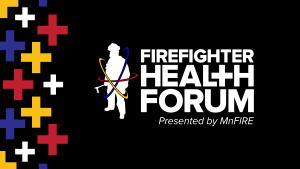Contributed by Nicholas E. Blonien, D.O.
Firefighting is stressful, taxing the body and mind in unique ways. Firefighters experience stress while anticipating the next call, upon waking to the alarm in the middle of the night, during work on scene and after tough calls.
Stress 101
Stress is the result of nervous system activation, specifically the sympathetic nervous system, otherwise known as the “fight or flight” response. This response isn’t like an on/off light switch, but rather a light dimmer. The sympathetic nervous system can be mildly activated during times of slight anxiety or fully activated during times of danger/emergency, or anything in between.
The sympathetic nervous system is countered by the parasympathetic nervous system, or the body’s “rest and digest” response. Activation of this component of the nervous system results in calmness and relaxation.
These two systems are in constant opposition of one another, with activity of one predominating appropriately in response to a given situation. When intense physical activity and alertness is required, like when a firefighter is called to action, the sympathetic nervous system predominates. When it’s time to rest, the parasympathetic nervous system predominates.
Some level of stress is good, such as when focus or action is required. But too much too often can take its toll on one’s physical and mental health.
How can I reduce stress?
Structured breathing techniques can help boost parasympathetic nervous system activity and decrease stress during times when increased stress is not appropriate, like preparing for bed or spending time with loved ones. Breathwork can be a powerful tool to help reset after a nighttime call or difficult shift, calm the body in preparation for sleep, or even settle the mind during periods of anxiety and worry.
There are several different breathing techniques that have been shown to decrease stress, and a five to ten-minute session may be all that is needed. Here’s a guide for some of the most common breathing techniques.
Recent research shows the effectiveness of breathwork in improving mood and decreasing physiological arousal. Performing breathwork routinely can be a powerful tool that firefighters can use to combat occupational stress.
Additional resources for managing stress
Confidential mental health resources targeting the stress unique to the fire service – including counseling visits and peer support – are available to Minnesota firefighters and their families at no cost through the MnFIRE Assistance Program. Call 888-784-6634 or click here to learn more and get help.








